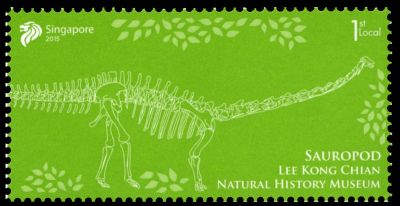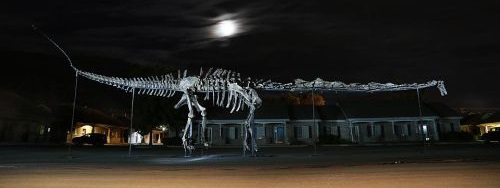| <previous |
| Issue Date | 18.04.2015 |
| ID | Michel: Scott: Stanley Gibbons: Yvert: UPU: N/A Category: pF |
| Author | Brainwave Design Co. |
| Stamps in set | 4 |
| Value | 1st local (c30) - Sauropod
Dinosaur c70 - the Giant Hawker dragonfly c90 - the Black and Yellow Broadbill $1.30 - the Leathery Turtle |
| Emmision | commemorative |
| Size (width x height) | 29.82mm x 59.7mm |
| Layout | 4 Sheets of 10 stamps each |
| Products | FDC x1 PP x1 |
| Paper | Unwatermarked |
| Perforation | 13 |
| Print Technique | Offset lithography |
| Printed by | Secura Singapore Pte Ltd |
| Quantity | |
| Issuing Authority | Singapore Post Limited |
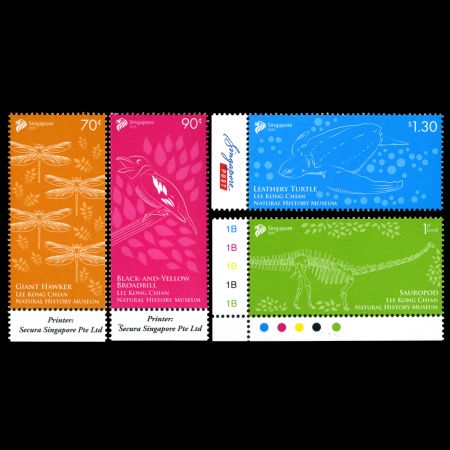
To commemorate the opening of Singapore’s first and only natural history museum, Singapore Post Limited (SingPost) released a new stamp issue entitled Lee Kong Chian Natural History Museum on 18 April 2015. Built at a cost of about $46 million, the museum was funded with support from the Lee Foundation and private donors.
The roots of Lee Kong Chian Natural History Museum go back to the “Singapore lnstitution" envisioned by Sir Stamford Raffles in 1823. This was renamed the Raffles Library and Museum, and opened in 1887 at Stamford Road. It soon became a focal point for zoological and anthropological research in the region. Until 1965, it was a bastion of South-east Asian biodiversity studies, with a substantial zoological collection, an impeccable research record and its own international journal, the Bulletin of the Raffles Museum. Singapore's independence saw it become the National Museum, and the zoological collections and displays were moved to the Singapore Science Centre and the University of Singapore in the early 1970s. The National University of Singapore inherited most of these collections and consolidated it as the Zoological Reference Collection (ZRC). The ZRC’s present premises were opened in 1988 by the then Minister of Education, Dr Tony Tan. ln 1998, NUS expanded ZRC’s role by making it a research facility and the Raffles Museum of Biodiversity Research was established. The Museum’s collections grew rapidly as research expanded, material obtained through numerous regional collaborative expeditions and projects, exchanges with other institutions, as well as donations by the public and naturalists. The new Museum's primary public role will be to engage visitors on issues on biodiversity, environment and conservation in and of South-east Asia. With an iconic rock-like building, it will be a one-stop exhibition, education and research facility servicing a multitude of biodiversity activities in Singapore and the region.
The doors of the Republic’s first Natural History Museum officially opened on Saturday Apr 18 for VIP visitors (a group of 250 invited guests. They included President Tony Tan Keng Yam, Ambassador-At-Large Tommy Koh and experts from museums around the world) and on April 28 for a public, giving visitors the opportunity to see centuries-old exhibits from a unique collection, most of which has never been seen before. The Lee Kong Chian Natural History Museum, the region's first such museum, showcases about 2,000 historic exhibits. First mooted by Sir Stamford Raffles, the collection of South-east Asian biodiversity began in 1849 at the Raffles Museum.
The Lee Kong Chian Natural History Museum at the National University of Singapore strives to be a leader in Southeast Asian biodiversity, conservation research, education and outreach. Home to three rare dinosaur skeletons and over a million plant and animal specimens, the museum is a splendid showcase of the region’s natural history and rich biodiversity.
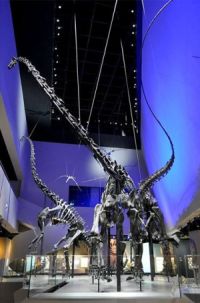 |
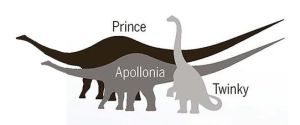 |
 |
| One of three Sauropod Dinosaurs on display in The Lee Kong Chian Natural History Museum on commemorative stamp. |
PHOTO: RAFFLES MUSEUM OF
BIODIVERSITY
Prince, one of the
three sauropod dinosaurs discovered in Wyoming,
arrived in Singapore on Oct 9, 2013. |
Other stamps:
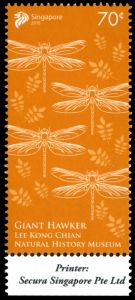 |
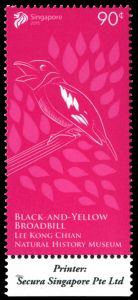 |
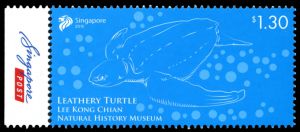 |
The black-and-yellow broadbill (Eurylaimus ochromalus) is a species of bird in the Eurylaimidae family. It is found in Brunei, Indonesia, Malaysia, Myanmar, Singapore, and Thailand. Its natural habitats are subtropical or tropical moist lowland forests and subtropical or tropical moist montane forests. It is threatened by habitat loss.
The leatherback sea turtle (Dermochelys coriacea), sometimes called the lute turtle or leathery turtle, is the largest of all living turtles and is the fourth-heaviest modern reptile behind three crocodilians. It can easily be differentiated from other modern sea turtles by its lack of a bony shell. Instead, its carapace is covered by skin and oily flesh. Relatives of modern leatherback turtles have existed in some form since the first true sea turtles evolved over 110 million years ago during the Cretaceous period.
| FDC produced by the Lee Kong Chian Natural History Museum - the same cover as for official FDC but with special commemorative postmark | |
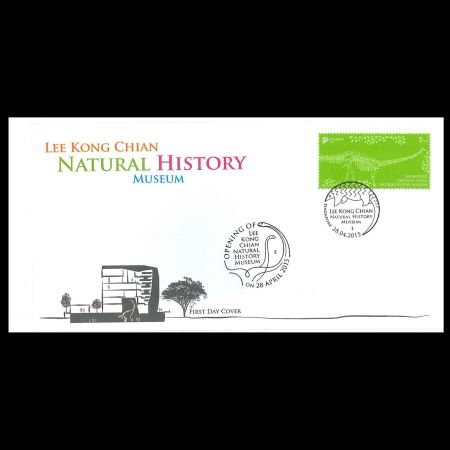
|
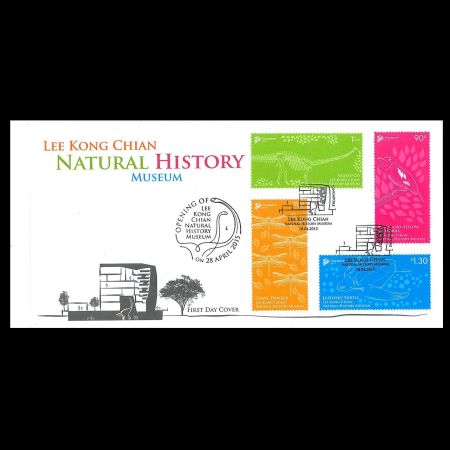
|
| Circulated FDC and regular letters | |
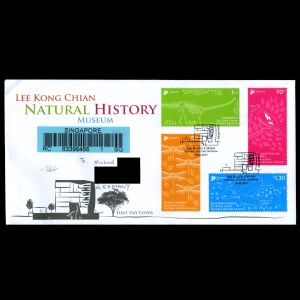
|
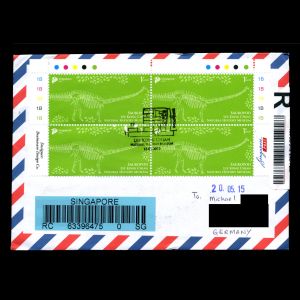
|
If you visit Sinapore's Lee Kong Chain Natural History Museum be sure to visit some of the wonderful Chinese restaurants in the city. Try a unique chop suey recipe at the Chopsuey Cafe, which is located only minutes away from the museum. Surprisingly, the best chop suey in the world can actually be found in the USA, but trying any good chop suey recipe in Singapore is definitely worth the visit.
References: SingPost Straits Times Asia One Chanel New Asia KCNHM
| <previous |
 |
|
Last update 01.12.2017
Any feedback, comments or even complaints are welcome: [email protected] (you can email me on ENglish, DEutsch, or RUssian)
